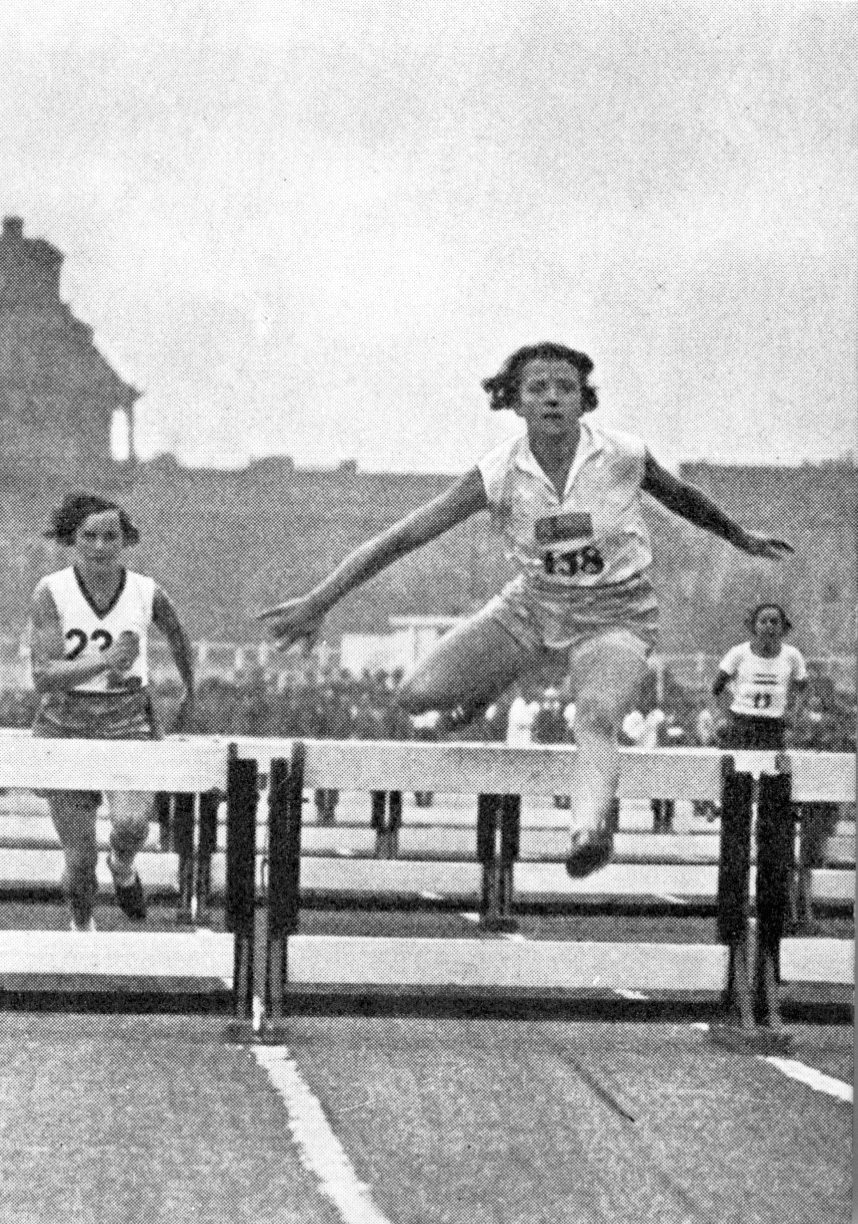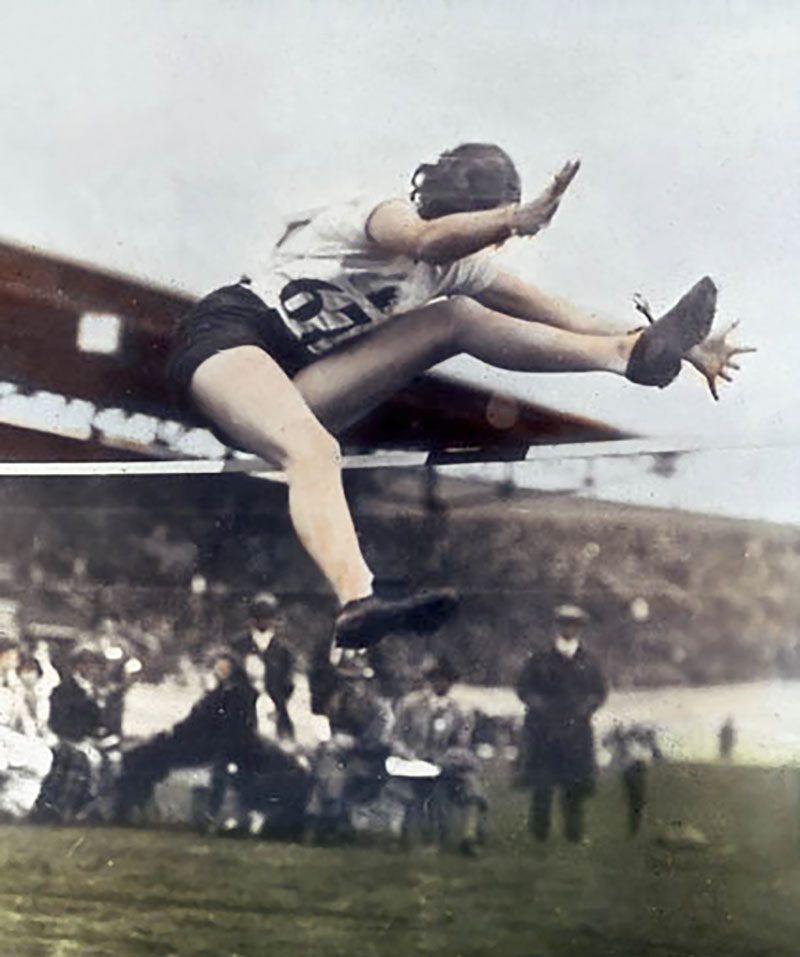The Olympic Committee Spent Years Concern-Trolling Women About ‘Wandering Wombs’
But the women’s-only Olympics of 1922 disproved doctors, doubters, and the IOC.

The Swedish team at the 1926 Women’s World Games in Göteborg, Sweden. (Photo: Bertil Norberg/Public Domain)
In the summer of August 20, 1922, a crowd of 20,000 spectators cheered at a rare sight: dozens of international women were running in fierce competition, throwing javelins and breaking world records. Alice Milliat, a French athlete who dominated rowing, soccer, and track and field competitions, was fed up with restrictions keeping women from Olympic competitions. So she organized a new Olympic Games—one for women only, the first of its kind.
Technically, women joined the modern Olympics in 1900, but the sports they could compete in were limited: a few women appeared on sailing, croquet, and horseback riding teams in the early 20th century, but only gentle competitions of tennis and golf were deemed female-appropriate at first. Archery, tennis, figure skating, and swimming were added to the women’s competitions by 1912; by the 1920s, fencing and light gymnastics were allowed, but the chance for women to show their athletic abilities ended there.
The reasons given by the International Olympic Committee (IOC) and the International Association of Athletics Federations (IAAF) for not letting women participate fully in the Olympics from the beginning drew from both moral and faux-medical grounds. Doctors frequently discouraged women’s participation in sports, with high-energy sports singled out as particularly harmful: one physician argued that the ski jump was “very strenuous for more or less weak, nervous and untrained women.“
Iconic Olympic sports like track and field were also considered too immodest and dangerous for a woman; many doctors through the 1800s believed that women had less energy, and that the uterus could actually detach and wreak havoc in the body as a ”wandering womb” when stressed, fueling common assumptions that women were frail in the 1900s. What women wore in competition was also policed: female swimmers were required to wear heavy blouses and bloomers while racing in the pool.

Alice Milliat, c. 1913. (Photo: Claud Piard/CC BY-SA 3.0)
Milliat and other female athletes knew this was ridiculous. Milliat loved sports. Her uterus, she trusted, remained firmly in place while she ran and exercised, which she could do for long periods of time. By 1919 she had become president of the Fédération des Societés Féminines Sportives, dedicated to organizing women’s sports competitions. She soon got the attention of her fellow women athletes when she formed the Federation Sportive Feminine Internationale (FSFI), and asked those who controlled the Olympics and sports competitions for the inclusion of female track and field sports.
The request didn’t go over well. When the IOC and IAAF ignored her, in 1921 Milliat and other passionate sportswomen of the FSFI instead organized a small, all-female track meet called the Olympiades Féminines (Women’s Olympiad) in Monte Carlo, France, attracting 100 athletes from France, Italy, the U.K. and Switzerland. No uteruses wandered, no women collapsed, and attending crowds loved them. This success drove the group to go big: Milliat declared 1922 the first Jeux Olympiques Féminins (Women’s Olympics).
Held in Paris on April 20th of that year, the Women’s Olympics was a sensation. Seventy-seven women from five countries competed in jumps, javelins and shot put, and six running competitions, including a stereotype-defying 1,000-meter race. In front of approximately 20,000 spectators, female athletes broke 18 existing world records. After the roaring success of the inaugural event, another Women’s Olympics was planned for four years later, in 1926.

Kinue Hitomi, competing in long jump in 1926, for which she broke the world record. (Photo: Public Domain)
As attention to the competition grew, the IOC became upset at the illegal use of “Olympics” in its title, and the event name was changed to the Women’s World Games. By the time the 1926 competition was held in Gothenburg, Sweden, it had grown to over 100 participants from nine countries, including Japanese competitor Kinue Hitomi, who broke the world record at the time for the long jump and won several other competitions. The next one, held in Prague, saw twice as many female athletes competing, in front of tens of thousands of fans. In all, four Women’s Olympic games were held over 12 years.
Meanwhile, the actual Olympics was drawing modest, limited numbers of female athletes. In the 1924 Summer Olympics in Paris, there were 136 women competitors, compared with 2,956 men. In response to the popularity of women’s sports (and, some attest, due to pressure from the FSFI), in 1928 the official Olympics tentatively added five of the 11 track and field categories included in the Women’s World Games. Unfortunately some news sources misrepresented female involvement in the 1928 Olympics; falsely reporting that 10 women collapsed during and after the 800-meter run, feeding into the sentiment against female involvement in the Olympics. Women were subsequently banned from participating in this run for the next 30 years.
As might be expected, the success of an all-female Olympic-style competition didn’t go down without backlash. Milliat butted heads with critics, including the “father of the modern Olympics,” Pierre de Coubertin, who said in 1900, “An Olympiad with females would be impractical, uninteresting, unaesthetic and improper.”
Coubertin reiterated this sentiment in 1928, saying “as for the admission of women to the Games, I remain strongly against it.“ (Until his last year of life, he would protest that the “only real Olympic hero” was the “individual adult male.”) Despite this, Milliat “was so successful that the August newspaper edition of Le Sportif compared Madame Milliat to Coubertin,” Ana Miragaya writes in Olympic Entrepreneurs, which probably would have grated on them both.

Hurdles competitors at the 1930 Women’s World Games in 1930. (Photo: Public Domain)
Meanwhile, Milliat’s sports competitions were having an international impact, with more and more women signing up to compete as serious athletes. Their critics didn’t let up, though: in 1929 Frederick Rogers, director of the New York State department of Health and Physical Education, tried to discourage female involvement in the Olympics and bribe female athletic groups into endorsing a ban.
In 1930, fresh from a winter Olympics meeting, committee president Godfrey Dewey remarked that there was no need to worry about too many women joining more Olympic games, since “some influential men consider the matter of women taking part should be separated entirely from the Olympic games.” Though he supported women participating, he added that the plan was to keep the amount of female participation the same as in years past, avoiding an increase.
Thus, the Women’s World Games continued to fill a gap for most female athletes. Milliat even requested that the Olympics do away with all “women’s sports” if they would not allow participation in all sports; her event could clearly cover the need. Some national battles went beyond sexism, though: African American women were excluded from official Olympic competitions until Louise Stokes and Tidye Picket broke that barrier, joining the 400-meter relay in 1936.
In “Women’s Contribution to Sport in the 20th Century”, Núria Puig notes that while “equal rights between men and women were recognized from a legal perspective, such equality remained a distant reality” during the Women’s World Games. The final Women’s World Games was held in 1934 in London, with 200 athletes from 19 countries. Finally, in 1938, an agreement was reached to allow more women’s sports at official Olympics games and recognize records set during the Women’s World Games.

Ethel Catherwood, one of the six Canadian women who competed in the 1928 Olympic Games. (Photo: Public Domain)
However, the IOC wouldn’t include female members in any decision-making position until 1981. “We have the good fortune to be doomed to a cult whose practices veil the relative austerity of purpose to girls and young women who, early on, braved the hydra of prejudices and social conventions,” Milliat wrote in 1922, and her words are still relevant.
While the Olympic charter promises “to encourage and support the promotion of women in sport…with a view to implementing the principle of equality of men and women,” the necessity to fight for the equality of Olympic women continues, be it for equal pay and field conditions to those of men under contract, or dodging sexist remarks and criticisms of their looks.
This makes women’s athletic groups, like those that started the Women’s World Games, an essential advocate for sportswomen. Female boxers won the chance to compete in the Olympics in 2012 and in May of 2016, athletes ran in Alice Milliat’s name for female athlete visibility. The promotion of women in sports across the world is also growing, and having a positive impact on the women and girls involved.
Milliat, who believed her fellow athletes “will happily destroy the legend of lightness and elegant sentimentality,” and her female Olympians of the 1920s would have likely approved.













Follow us on Twitter to get the latest on the world's hidden wonders.
Like us on Facebook to get the latest on the world's hidden wonders.
Follow us on Twitter Like us on Facebook